On Sunday 8th of March I attended the Tiny Homes Carnival held at the St. Ives Showground in Sydney.
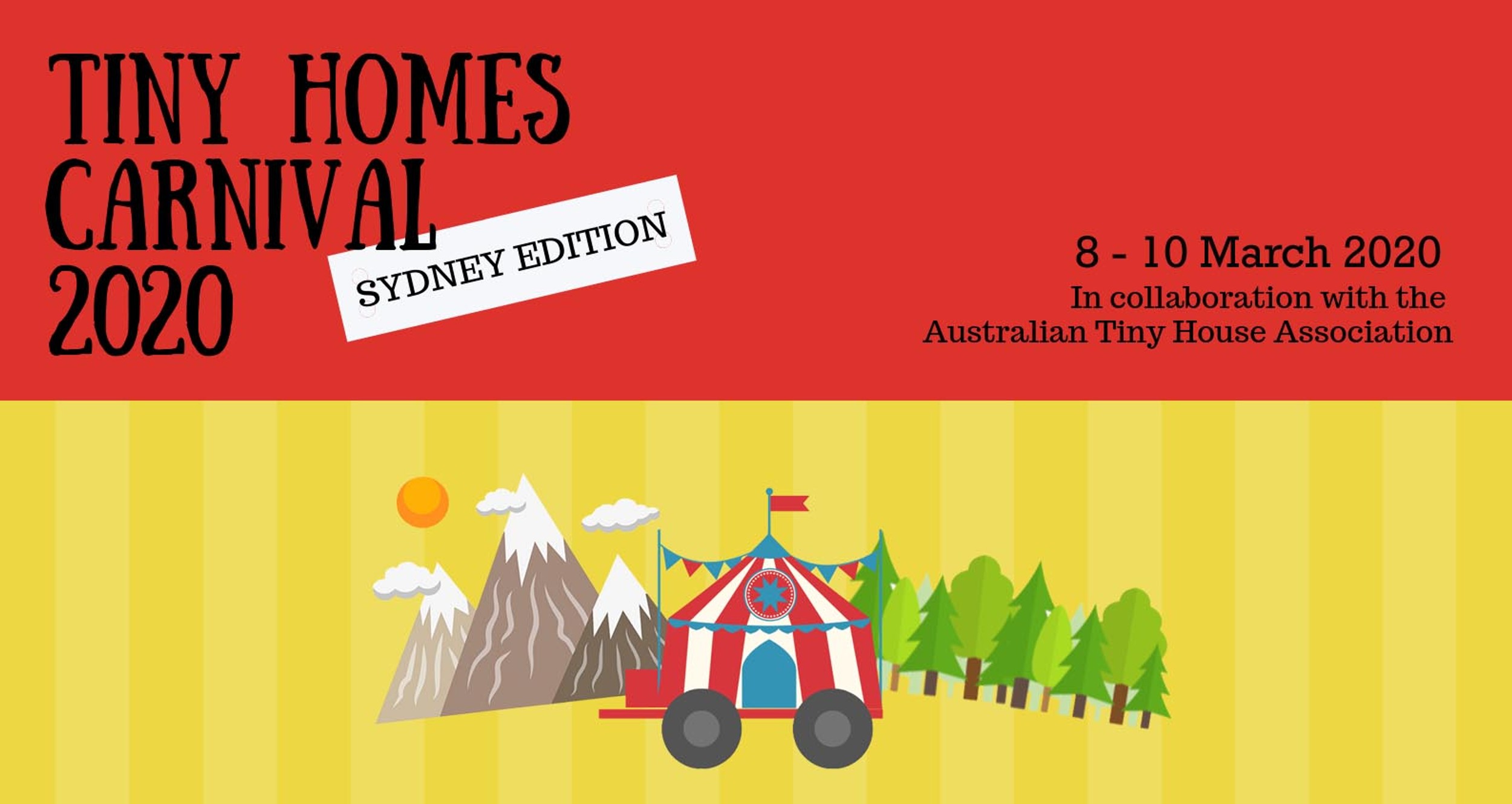
I attended this event to see if there were any new innovative storage ideas that I could use with clients. Yes, some very serious storage ideas are a necessity if you are choosing to live “tiny”. What I did find is that there is a lot to be learnt about the regulations of building/owning/moving/living a tiny home.
My first stop was the Australian Tiny House Association. They are a team of volunteers working together with councils across the country, the various authorities and policy makers to include considerations for tiny homes in their planning.
You can visit their website www.australiatinyhouseassociation.org.au for more details on:
- Road Rules & Vehicle Registration
- Building Regulations
- Planning & Dwelling
- Living Tiny by State or Territory
Their definition of a tiny home is:
“Tiny houses are moveable dwellings up to 50m2* that are suitable for residential use. Tiny houses can be largely grouped into 2 categories: on wheels or on skids.”
(*for one dwelling, excluding if they are connected)
You can purchase an annual membership to the association for $50.00. Below are some of the areas of information that you will have access to:
- Access to a network of tiny house advocates, enthusiasts and specialists.
- The opportunity to talk and interact with like-minded individuals
- Networking with other members who have experienced the ins and outs of negotiating the Tiny Home journey.
Uses for a Tiny Home
A tiny home can be used in a number of different ways.
- A full-time residence
- An Air B&B
- Granny Flat
- Home Office
- Extra space for the family
- A weekend getaway
- A She-Shed. This concept is becoming increasingly popular
Tiny House Builders and $ Costs
The first builder I visited was Tiny Away – www.buildtiny.com.au . The starting price for a Panel Kit of their smaller model starts at AUD$35,000.
This group offers three options:
- Buying a Tiny Home – buy outright
- Tiny House Rental Program – a kind of try before you buy option. Rent first and buy when you are ready
- Tiny House Getaway – great weekend getaway option. They have various locations across NSW and Vic.
The three tiny homes that were on display were probably best used as a weekend getaway. There was no real inside living area, limited kitchen appliances or clothing storage. There is a deck where you can sit outside and hopefully have a gorgeous view to look at. Aesthetically they were beautifully fitted out.
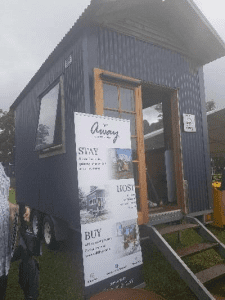
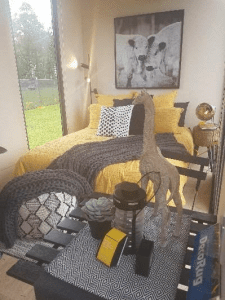

The next group was Havenwood Tiny Homes – www.havenwoodtinyhomes.com . They have a total of four models. The one that I looked through was The Maverick. The starting cost for a completed home and trailer was AUD$98,000.00 with prices increasing dependent on extras selected.
This is where I really started to see the possibility of living in a tiny home for an extended period of time. There is also a model with a setup of bunks for kids.
All the spaces are functional and plenty of really smart storage areas in every room. The bedroom, located on the ground floor has two rails for hanging clothes, two shelves above the bed and a footlocker style bench for additional storage.
The living area has additional cupboards fitted towards the ceiling so useable space is left at floor level.
The kitchen is fully equipped with all the appliances that you will need.
One of the options is a fold down deck which can be easily secured for travelling.
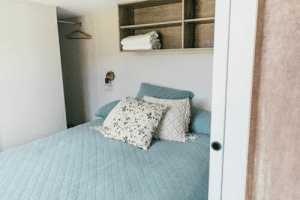

Finally, I saw the Hauslein Tiny House Co. (www.hauslein.com.au). This is really heading towards the serious end in tiny home building.
Prices start at AUD$79,000+ for their smallest model, the Little Sojouner, and up to AUD$110,000+ for their largest model, the Grand Sojouner. This model has the potential for three bedrooms. The master bedroom is downstairs with two upper level lofts.
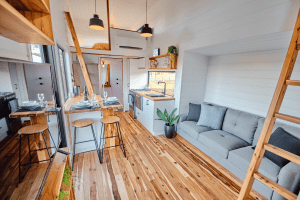
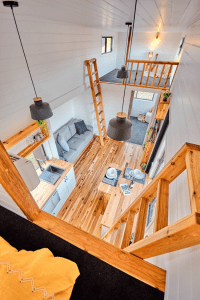
The Grand Sojouner has everything that you could ask for in a tiny home. Beautifully fitted out with all the bells and whistles.
Positives & Negatives
Like anything, there are positives and negatives attached to tiny living.
So, what do I think the positive and negatives are of living tiny? This is my list of 14.
+ You can travel with your Tiny House
– The costs associated with moving a tiny home can be high
+ Living with less possessions
– Living with less possessions
+ Less space to clean
– Need to clean more often
+ Less space means less consumption
– Having to go without the tiny luxuries
+ You can customise your tiny home
– Restricted by what you can bring into the home due to weight restrictions when moving a tiny home
+ More affordable than buying a traditional house
– Building tiny can add costs e.g. smaller custom appliances can be more expensive, custom tiny furniture can cost more
+ Eating more fresh foods due to limited storage
– More trips to the supermarket due to less food storage
+ Small space to heat and cool
– Smaller A/C systems can struggle against weather extremes
+ No need to tie into septic systems
– Having to manually empty composting toilet
+ Some surprising storage ideas
– Not always functional or easy to access
+ Can be fitted with laundry facilities
– Appliances are extremely small which means more loads of washing
+ Doesn’t need a large parcel of land
– Locating and setting up a tiny home has restrictions which differ from state to state
+ Financial freedom
– Due to this being a relatively new way of living, financial lenders may be hesitant to finance this type of housing
+ Travelling with pets
– Travelling with pets
In closing, tiny living is not for everyone. My husband and I are definitely ready to downsize, but not to that extent just yet. We currently enjoy getting away in our caravan towed behind our 4WD. Maybe in the future. How do you feel about tiny living?
